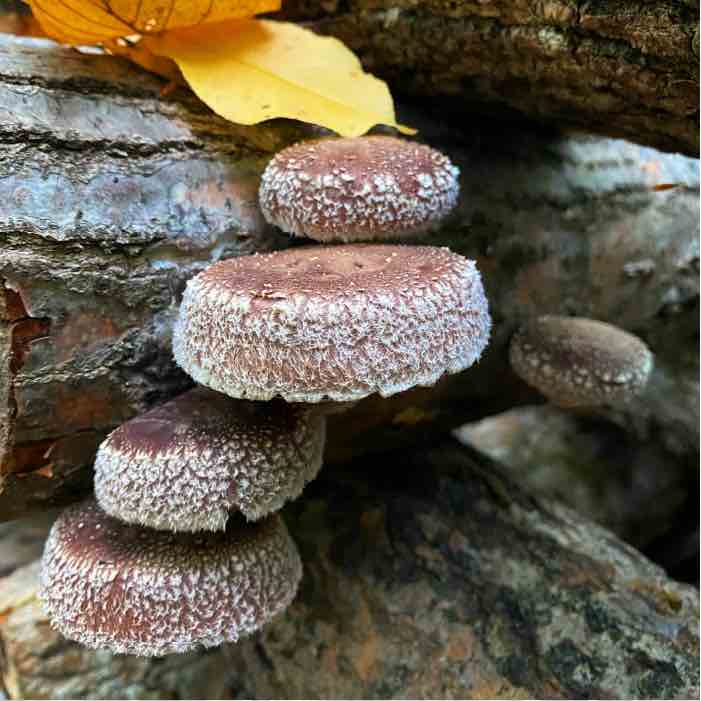Can I Inoculate Mushroom Logs in Fall?
Winter approaches, bringing with it questions about inoculating fall cut wood. In this blog we'll cover some of the basics.

Can I Inoculate Mushroom Logs in the Fall?
Yes! However, if you are incubating logs after inoculating outdoors, you just need to be mindful about the limitations of your climate (see Indoor Incubation below if you live in the north).
Spawn needs about 4 weeks of daytime highs above 45°F to establish itself for survival
before daytime temperatures are regularly below freezing for the winter, but still keeping in mind that
you won't want to cut your logs until trees move into dormancy. Trees enter the
dormancy process in late summer, beginning to protect themselves against the winter ahead.
Leaf drop shields the tree from moisture loss and metabolism slows in preparation for rest. The
turn of color (1/3rd of the canopy changing leaf color) signals the tree is safely dormant and
suitable mushroom wood when cut. At this time the spawn can take advantage of concentrated
moisture and nutrients in the wood. In the South, say USDA zone 6 and south, inoculation can
occur in the majority of states from color change through December and on through all of
winter. In the North, there is a shorter time between leaf color change and really cold
temperatures so cultivators need to be very organized or arrange for indoor incubation (see
below).
Three big benefits of harvesting wood in the fall and fall inoculation:
- Cells in the wood are at their most receptive to establishment of the spawn. At the beginning of the winter rest stage, wood cells become more pliable to allow water to migrate out of the cell into surrounding space to prevent damage from freezing. This pliability allows for improved and faster fungal establishment.
- Logs cut in the fall of the year have just spent all summer collecting nutrients. The larger sapwood layer (figure 1) also makes for great mushroom cultivation.
- And finally, logs cut and inoculated in the fall stand an increased chance of being inoculated!
Spring can get really busy and before you know it, the logs may be too dry to make suitable mushroom wood and become destined for the firewood pile.
Indoor Incubation
If you are in one of the colder areas that benefit from indoor incubation, you can create a
minimalistic incubation chamber in a cool (but slightly heated) building.
Indoor incubation specifics:
- The indoor space needs to be heated to 40-55°F.
- Inoculated logs need to be densely crib stacked on pallets with large logs to the outside and
smaller logs in the center of the pile (figure 2).
- Cover stacks tightly with plastic sheeting.
- Not once condensation appears on inside of the plastic (figure 3). Once the condensation disappears lift the tarp to provide fresh air and water the logs so that the log surface is wet. Re-cover and vent again when condensation builds.
- Continue this process through winter and place logs back outdoors when temperatures inside get over 60°F.
Best mushrooms for indoor method:
While this method can be done with any mushroom variety, we tend to only use it to speed up shiitake fruiting times on logs.
Difficulty:
Moderate. The indoor method isn't necessarily difficult, but it does take a good amount of diligence to keep the moisture levels where they need to be.
Time of year to do the indoor method:
Late fall to winter. Temperatures indoors during the summer often get too warm for suitable conditions.
FIGURE 1
White sapwood layer on logs
FIGURE 2
Proper stacking configuration with the largest logs on the outside
FIGURE 3
Condensation coming off of logs